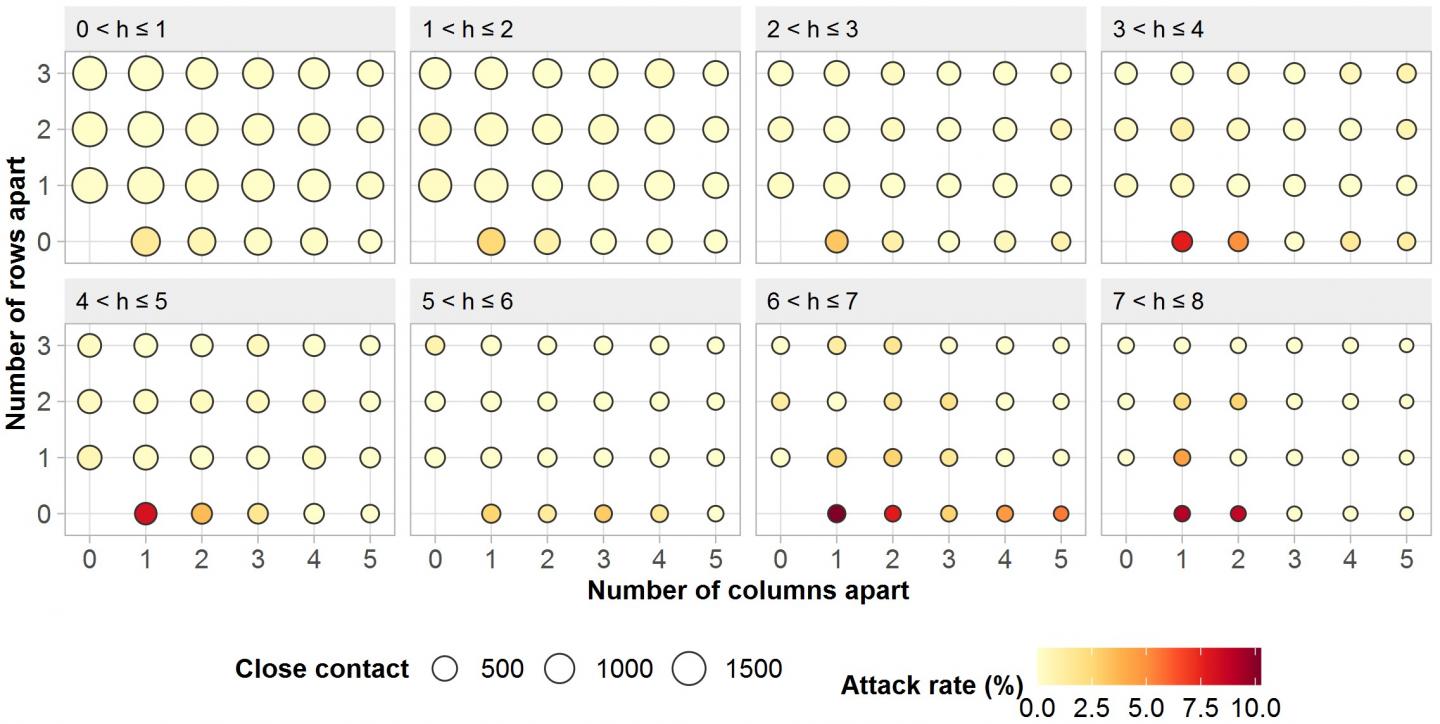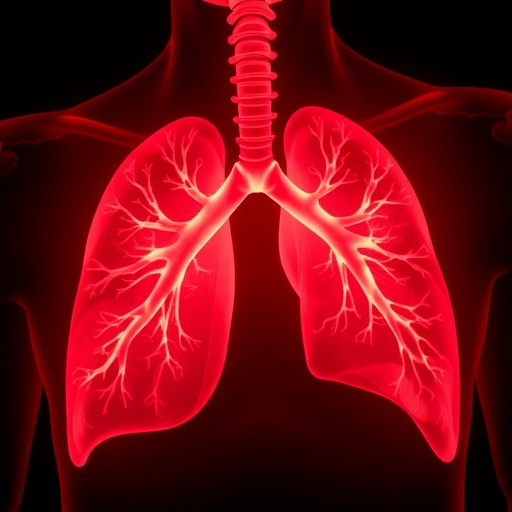
Credit: University of Southampton
A study by scientists from the University of Southampton has examined the chances of catching COVID-19 in a train carriage carrying an infectious person.
Based on high-speed routes in China, researchers from WorldPop found that for train passengers sitting within three rows (widthwise) and five columns (lengthwise) of an infected person (index patient) between zero and ten percent (10.3) caught the disease. The average rate of transmission for these ‘close contact’ travellers was 0.32 percent.
The study, in collaboration with the Chinese Academy of Sciences, China Academy of Electronics and Information Technology, and Chinese Centre for Disease Control and Prevention, also showed that passengers travelling in seats directly adjacent to an index patient suffered the highest level of transmission, with an average of 3.5 percent contracting the disease. For those sitting on the same row, the figure was 1.5 percent.
The ‘attack rate’ for each seat – the number of passengers in a given seat diagnosed with COVID-19, divided by the total number of passengers travelling in the same seat – increased by 0.15 percent for every hour that a person travelled with an index patient. For those in adjacent seats, this rate of increase was higher at 1.3 percent per hour.
Interestingly, the researchers found that only 0.075 percent of people who used a seat previously occupied by an index patient went on to contract the disease.
Details are published in the journal Clinical Infectious Diseases.
The WorldPop team, experts in population mapping, used sophisticated modelling to analyse anonymised itinerary and infection data relating to train passengers on China’s high-speed G train network. This included those who had COVID-19 at the time of travel and their close contacts (who showed symptoms within 14 days of travel). The data, covering a period between 19 December 2019 and 6 March 2020, included 2,334 index patients and 72,093 close contacts. Their travel times ranged from between less than an hour to eight hours.
Lead investigator, Dr Shengjie Lai, comments: “Our study shows that although there is an increased risk of COVID-19 transmission on trains, a person’s seat location and travel time in relation to an infectious person can make a big difference as to whether it is passed on. The findings suggest that during the COVID-19 epidemic it is important to reduce the density of passengers and promote personal hygiene measures, the use of face coverings and possibly carry-out temperature checks before boarding.”
The researchers conclude that given the attack rates estimated for passengers in the same row as an index patient, a safe social distance of more than one metre is required for one hour spent travelling together. After two hours of contact, they consider a distance of less than 2.5 metres may be insufficient to prevent transmission.
Director of WorldPop, Professor Andy Tatem adds: “Our research is the first to quantify the individual risk of COVID-19 transmission on public transport based on data from epidemiological investigations of disease cases and their close contacts on high-speed trains.
“It shows that the transmission risk not only relates to the distance from an infected person, but also the time in their presence. We hope it can help to inform authorities globally about measures needed to guard against the virus and in-turn help to reduce its spread.”
###
Notes to Editors
1) For interviews please contact, Peter Franklin, Media Relations, University of Southampton. [email protected] 07748 321087.
2) The paper The risk of COVID-19 transmission in train passengers: an epidemiological and modelling study is published in the journal Clinical Infectious Diseases and can be viewed here: https:/
3) Epidemiological investigations of COVID-19 patients and close contacts were conducted by the Chinese and local Centres for Disease Control and Prevention in China. Itinerary information was from the China State Railway Group.
4) More about WorldPop can be found here: https:/
5) Further information about Geography and Environmental Science at Southampton can be found at: https:/
6) The University of Southampton drives original thinking, turns knowledge into action and impact, and creates solutions to the world’s challenges. We are among the top 100 institutions globally (QS World University Rankings 2019). Our academics are leaders in their fields, forging links with high-profile international businesses and organisations, and inspiring a 22,000-strong community of exceptional students, from over 135 countries worldwide. Through our high-quality education, the University helps students on a journey of discovery to realise their potential and join our global network of over 200,000 alumni. http://www.
Media Contact
Peter Franklin
[email protected]
Related Journal Article
http://dx.





